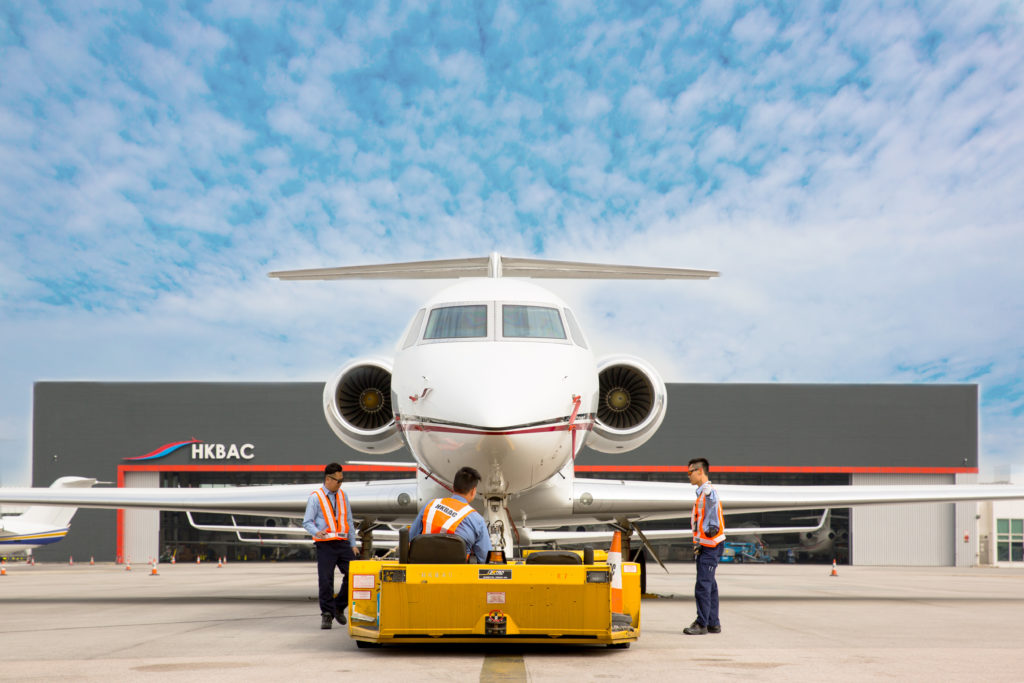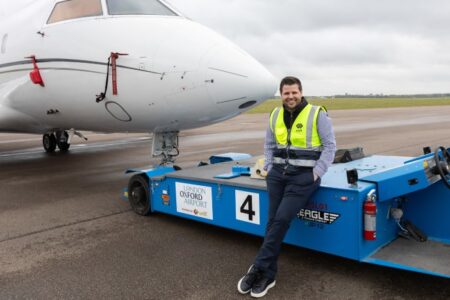Hong Kong’s success as a business hub has always been based on its open borders and unrestricted movement of people, particularly by air travel.
However, the region’s ongoing isolation, which has been enforced by some of the strictest quarantine and testing regimes the world has seen, is threatening its global status as a finance centre. The region has even slipped to 77th place on a liveability ranking, dropping 19 places since last year. Many are blaming the ongoing stringent Covid-19 restrictions.
Industry insiders believe that Hong Kong’s business aviation sector is at the lowest point it has ever been and needs government help to survive. While this is related to public health policy, lobbying of the Hong Kong Government for immediate relief measures and to ease quarantine restrictions for flight crews continues.
Pre-pandemic
Despite the bleak current outlook, prior to the outbreak of the pandemic, Hong Kong was enjoying a steady increase in flight activity. During 2018 business aviation flight movements were 20% more than in 2017.
“Pre-Covid, the various holiday seasons and summer vacation periods were quite hectic. Hong Kong in general terms was always busy as a financial and business hub, tourist location and a gateway to mainland China,” says Gary Dolski, CEO of Hong Kong-based business jet operator Metrojet.
“Life with Covid-19 is very different and the past two years has been quiet, with negligible spikes in travel driven largely in part by the lifting of quarantine restrictions and limits, both in and out of Hong Kong.”
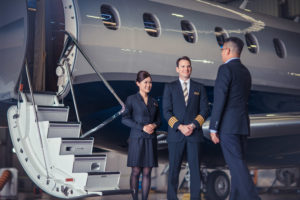
Madonna W. Y. Fung, general manager of the FBO Hong Kong Business Aviation Centre (HKBAC) agrees.
“The volume of business aviation decreased dramatically due to the social unrest in the second half of 2019 in Hong Kong. Then it was affected by the pandemic,” she says.
Though there are relatively few business aviation flights in and out of Hong Kong compared to commercial and cargo air traffic, business aviation supports the finance and business leaders that have helped grow and establish the city. “To us in the industry and to those that use private aircraft, business and general aviation in Hong Kong is very important,” says Dolski.
“Our sector supports business, and the aircraft are really an extension of the owners and used as an important tool to grow companies.”
Pre-Covid the sector was growing at a good pace, believes Dolski. “Business aviation was only limited by the available ramp space and access to slots in pre-pandemic days.” Most of the flights that were handled by HKBAC were for business purposes.
“Passengers were entrepreneurs or the senior executives of listed companies, multinationals, and financial institutions using business aviation to connect to second-tier mainland Chinese cities,” says Fung.
There has been no growth recently because of the Covid-19 Omicron variant outbreak. Instead there has been a significant reduction of aircraft being positioned in Hong Kong and a sharp decline in the number of flights.
“The quarantine regulations incurred by Covid-19 have significantly impacted the usage of business aircraft in the region,” says Dolski.
“I believe that there will be a strong resurgence in business aviation once we have Covid under control or as a minimum, adapted to a new Covid world,” he says.
Restrictions
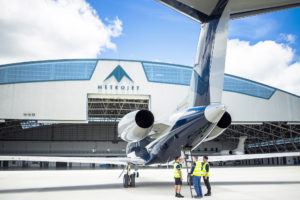 Hong Kong’s anti-pandemic measures are focused on preventing the virus entering the city. Quarantine restrictions for international inbound travelers are among the most stringent in the world.
Hong Kong’s anti-pandemic measures are focused on preventing the virus entering the city. Quarantine restrictions for international inbound travelers are among the most stringent in the world.
“Understandably, that may cause travelers to avoid us in the pandemic,” says Fung. “However we are bullish that, given the vibrant development of the Greater Bay Area, Hong Kong’s business aviation patronage will resume and improve when the pandemic calms.
“But, chartered flights have been sought after, especially when local lockdowns started and international commercial flights were suspended.”
If you are planning on traveling to Hong Kong, Dolski advises regularly checking the latest Covid-19 restrictions for the passengers and crew.
“Foreign pilots are for instance not permitted to join the community and will need to isolate in an airport hotel until their departure. It is also worth noting that there are no limitations with obtaining slots or parking, but hangarage is not available.
“A drop-off and positioning to Clark Airport in the Philippines would be a solution – with a pick-up of the passengers from Hong Kong when required,” says Dolski.
Flying less
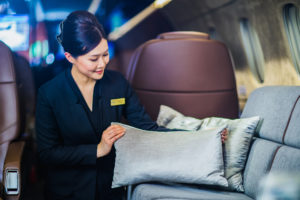 The prolonged and bumpy road to the removal of restrictions in Hong Kong has caused many owners to consider selling their aircraft, believes Dolski. “We are seeing some owners disposing of or considering selling their aircraft to save on crew, maintenance, storage, parking, and asset depreciation costs,” he says.
The prolonged and bumpy road to the removal of restrictions in Hong Kong has caused many owners to consider selling their aircraft, believes Dolski. “We are seeing some owners disposing of or considering selling their aircraft to save on crew, maintenance, storage, parking, and asset depreciation costs,” he says.
“The pre-owned market has been very hot this past 12 months, especially in the USA, and aircraft are getting a premium price.
“For clients that have significantly reduced their flying, selling an expensive asset that is not being used is worthy of consideration. The downside of this will be that less aircraft will be available when the skies open again.”
According to Dolski, aircraft OEMs are being cautious by controlling production pipelines, adding to the issues. He says, “For the business aviation operators in Hong Kong, the past and current quarantine policies negatively impact the aircraft management and MRO business because they greatly restrict and impede movement of clients and crew resulting in significantly less flights and maintenance work.”
Charter market
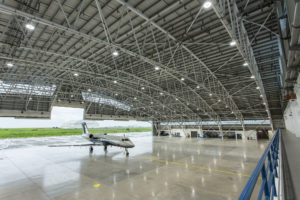 Like elsewhere around the world, the health and safety concerns related to Covid-19 have increased interest in the charter aircraft market, including in fractional and shared ownership models.
Like elsewhere around the world, the health and safety concerns related to Covid-19 have increased interest in the charter aircraft market, including in fractional and shared ownership models.
“There are definitely new customers trying out business aviation. There has been a growth of ultra high-net-worth individuals in the world and this region,” says Dolski.
“Many individuals that previously flew first class with regularity and have the financial wherewithal are willing to pay a premium for the opportunity to fly privately and benefit from higher safety and security features.
“There will also be some charter / fractional owners that will move up to buy a pre-owned or new aircraft after being exposed to the benefits of flying in this manner.”
A brighter future
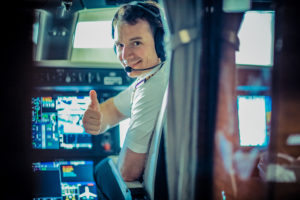 Although the current travel restrictions in Hong Kong are bad for the business aviation industry, the people in the sector remain hopeful for the coming months.
Although the current travel restrictions in Hong Kong are bad for the business aviation industry, the people in the sector remain hopeful for the coming months.
“The North American and European markets are rebounding well with the future remaining quite bright. I believe that Hong Kong and the region will also bounce back, albeit later,” says Dolski.
“The biggest impediment I see is the strict quarantine regulations and travel restrictions, which are contrary to what is happening in the rest of the world. The zero-Covid approach to the Omicron variant is proving extremely challenging and may require a reboot in the approach being taken by the government.”
Fung agrees, “Despite the devastating effect of the Covid-19 pandemic, we are confident in the long-term prospect of our business, Hong Kong’s fundamentals and our position in the high growth Greater Bay Area.
“Regardless of the current challenges the region is facing, Hong Kong will continue to harness its position as an international aviation hub in Asia, while business aviation will continue to play a vital role in helping draw entrepreneurs, corporate leaders, as well as high value business activities from all over the world.”


